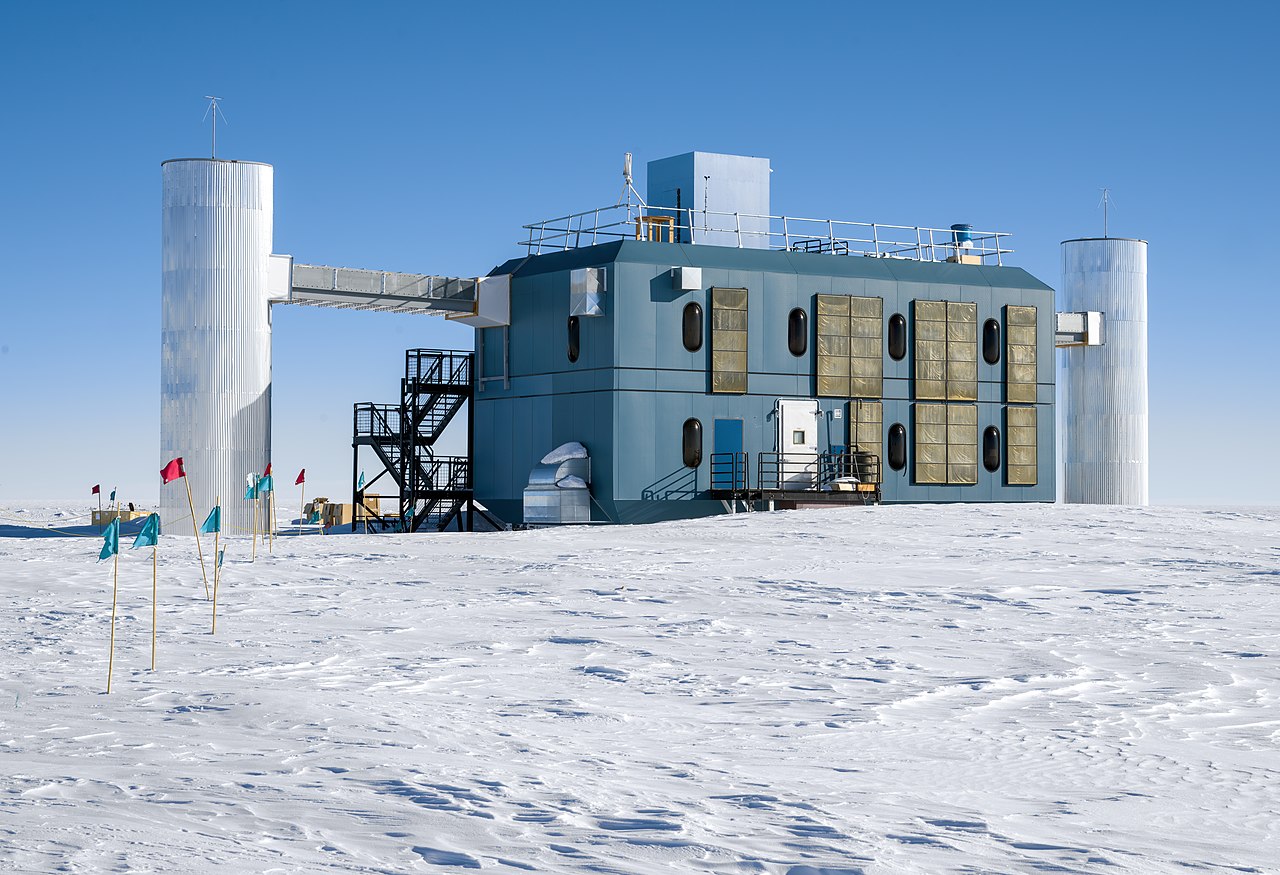The IceCube Neutrino Detector is an observatory unlike any other. Using sensors embedded inside a square kilometer chuck of Antarctic ice, it detects tiny particles called neutrinos, which rarely interact with ordinary matter and are incredibly hard to capture. IceCube has had several major successes in the last few years, including this summer’s announcement of a neutrino map of the Milky Way galaxy. But scientists are pushing up against the limits of IceCube’s capabilities, and plans are in the works for IceCube-Gen2: a detector 5 times as sensitive and 8 times as large, with a radio antenna array across four hundred square kilometers. IceCube Gen2 will increase the number of neutrino detections by an order of magnitude, and will be able to better pinpoint the sources from which the neutrinos are emitted.
Plans for IceCube-Gen2 have been in the works for some time, and it begins with an upgrade to the original facility, expected to take place in 2025-26. That will see an additional 7 cables in the observatory’s core and 700 new optical sensors. But the true expansion to Gen2 is far more ambitious, and is expected to be ready around 2033.
This summer, the project’s technical design report was released, showing the plans and science case for IceCube-Gen2.
Neutrino observatories like IceCube are part of a burst of new observational techniques from the last decade that, when combined, will allow us to get a fuller picture of the universe. It’s called multi-messenger astronomy: no longer are we reliant only on wavelengths of light (visible, infrared, radio, etc.) to see the universe, but we can now also observe it via gravitational waves, and, using detectors like IceCube, neutrino emissions.
IceCube, technically, does not see neutrinos themselves: it sees their decomposed components. When a neutrino impacts other matter (which happens very rarely – trillions of them pass through your body every second without an impact), it is split apart into components, some of which become particles called muons.
At such high energies, these muons can move faster through ice than light can (nothing can move faster than light in a vacuum, but it is possible to go faster than light moving through matter). This produces a flash of light known as Cherenkov radiation, the same phenomenon that produces a blue glow around nuclear reactors.

Due to the high energies involved, IceCube is particularly well suited to studying high-energy physics: radiation and particles accelerated to extreme levels as a result of energetic events in the universe. One example is a blazar – an active galactic core with jets of relativistic material streaming out of it.
In 2018, IceCube successfully demonstrated that a flaring blazar was the source of a burst of high-energy neutrinos detected by the observatory. It’s an exciting first step in determining where neutrinos are produced in the universe.
But IceCube is only really able to pinpoint the highest luminosity events. Astronomers believe there are dimmer, more diffuse sources of neutrinos, and that is what IceCube-Gen2 will be much better at identifying.
Source identification is the main reason for the expansion of the observatory’s radio antenna array. Working in tandem with the optical detectors under the ice, the radio array helps pinpoint the direction from which the neutrinos arrived.
Alongside improving astronomers’ ability to find out where high-energy neutrinos come from, Gen2 will also vastly increase the sheer number of neutrino detections that are possible. The current observatory catches about 100,000 neutrinos per year. Gen2 will easily hit 1 million per year. That, combined with its higher sensitivity, means Gen2 will be able to capture more meaningful data that tells a more complete story about our universe at these energy scales.
The promise of IceCube-Gen2 is that it will be able to work in tandem with other types of telescopes – those studying gamma rays, cosmic rays, and even gravitational waves – to reveal the high-energy universe as we’ve never seen it before.
Learn More:
“The next generation neutrino telescope: IceCube-Gen2.” IceCube-Gen2 Collaboration, ArXiv.
Featured Image: The IceCube Neutrino Observatory in Antarctica in 2023. Credit: Christopher Michel (Wikimedia Commons).

